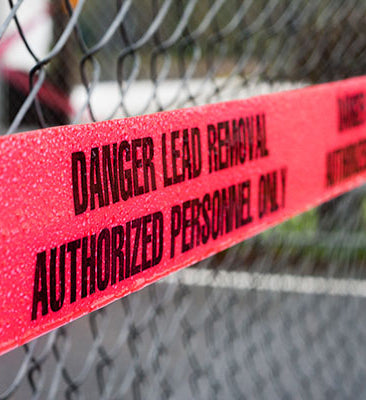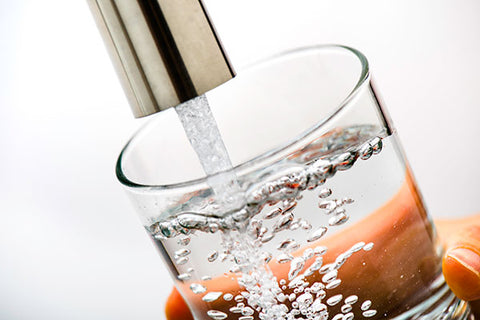Recent Posts
Which Home Water Filtration System to choose?
 Buying a new drinking water filtration system for your home is an important decision. Everyone deserves reliably clean water and, spoiler alert, reverse osmosis is still the best and most efficient way to ensure confidence that your water is safe to consume. But with all the different kinds of water filtration methods, makes and models to choose from, understanding which system best suits your specific needs can be tricky. In this article, we try and break down the most important information you need to know to make the best decision.
Buying a new drinking water filtration system for your home is an important decision. Everyone deserves reliably clean water and, spoiler alert, reverse osmosis is still the best and most efficient way to ensure confidence that your water is safe to consume. But with all the different kinds of water filtration methods, makes and models to choose from, understanding which system best suits your specific needs can be tricky. In this article, we try and break down the most important information you need to know to make the best decision.
How safe is your drinking water?
According to the World Health Organization about half a million deaths each year are attributed to poor quality drinking water, worldwide. However, municipal city water in the USA is considered relatively safe. In 2016, over 90% of all systems across the country were in compliance with standards set forth by the federal Environmental Protection Agency. Of course, this means that 1 in every 10 municipalities was failing, and it is likely that year to year, the locations of these violations will change.
 Interested in knowing more about your local water? The Environmental Working Group (EWG) has a simple online tap water contamination check based on your zipcode. For specific location testing, you can order mail-in kits like these from SimpleLab™.
Interested in knowing more about your local water? The Environmental Working Group (EWG) has a simple online tap water contamination check based on your zipcode. For specific location testing, you can order mail-in kits like these from SimpleLab™.
Biological contaminants are typically held in check by the microbicides chlorine and chloramine. However, their effectiveness is contingent on chemical potency traveling all the way to the tap, so the method is not foolproof.
Toxic substances like lead and arsenic can also make their way to the end user, and the difficult truth is there are over a million miles of lead pipe feeding drinking water to Americans. In Flint, Michigan, one of the worst mass lead poisoning cases in modern history occurred when officials switched water sources without considering how the new water’s chemistry would affect the biofilm holding back lead particles that had accumulated inside the piping. The result was disastrous and will have human cost repercussions lasting many years.
For the 13 million US homes using a well for drinking water, results are less predictable. Since there is no EPA regulation on wells, owners are responsible for the safety of their water. Well water is generally considered safe, but with absence of municipal microbicides, it is important to test water quality regularly, as seasons, temperature and other factors can alter water chemistry throughout the year. The most trusted and reliable way to ensure well or municipal water is clean and ready to drink is to run the source water through a reverse osmosis filter.
What is Reverse Osmosis?
Simply put, reverse osmosis water filters (called “membranes”) are made of a very dense material with microscopic pores (about 0.0001 micron) that filter out anything larger than a water molecule (also about 0.0001 micron). This can include, but is not limited to, toxic metals such as lead, mercury and arsenic, sediment, rust and fluoride, as well as biological contaminants such as bacteria and viruses. It is even possible to desalinate (remove the salt) from saltwater, although a necessary increase in membrane density requires a tremendous amount of energy and pressure to separate water and salt molecules, which are also very small (about 0.0007 micron).
Which is the best water filtration method?
 Comparing Reverse Osmosis to other popular filtration methods is important to understanding how to make the right choice when shopping around. When properly maintained, a reverse osmosis system is, generally speaking, the most effective of all water filters, but that doesn’t mean there aren’t any other options. Here is a list of other methods that remain popular for various reasons.
Comparing Reverse Osmosis to other popular filtration methods is important to understanding how to make the right choice when shopping around. When properly maintained, a reverse osmosis system is, generally speaking, the most effective of all water filters, but that doesn’t mean there aren’t any other options. Here is a list of other methods that remain popular for various reasons.
- Ultraviolet sterilizers: These systems use UV-C light to disrupt the DNA in biological organisms, and have become a standard for non-chemical disinfection across the globe. These systems have no filters to change but do require annual replacement of the UV-C bulb. The major downside of UV sterilizers is that they do not have any effect on non-biological contaminants such as arsenic or lead, so they are typically used as a pre-treatment or post-treatment method for reverse osmosis systems.
- Ceramic filters: These filters, when produced at sufficient quality standards, are effective at managing biological contaminants. However, they do not remove chemical contaminants, and require a separate filtration method, such as reverse osmosis, to do so.
- Carbon filters: While carbon filters can improve the quality of water, especially the taste and smell, reverse osmosis filters remove much, much smaller particles from the water supply. While these filters are useful for removing chlorine and chloramines, a carbon filter alone should only be used if taste improvement (and not safety) is the only desired outcome.
- Distillation filter: These filters use a heating element to boil the water, catching the purified steam. Like reverse osmosis water, captured steam is essentially pure and contamination-free. The downside to these filters is that they are slow and energy intensive. Also, like reverse osmosis, they strip away the good ions such as calcium and magnesium, which are both essential to human health and give water a pleasing flavor.
- Deionization filters: These filters use resins to exchange ions holding a positive or negative charge (such as iron or silica, respectively) with hydrogen and hydroxyl, thus forming pure water which has no charge. This method works well as a “final pass” to remove all minerals from water but does not remove biological contaminants.
If the goal is complete filtration at a reasonable price, the clear winner is reverse osmosis. The only other method that comes close is distillation, but it is expensive, slow, and dependent on an external power source.
Drawbacks to Reverse Osmosis
The first is, all RO systems produce varying amounts of wastewater. Contaminants that are blocked from passing through the reverse osmosis membrane are either trapped inside the filter’s porous material or are flushed down the drain in a wastewater stream. Typically speaking, most under the counter systems produce 4 parts wastewater to 1 part purified water. With more efficient systems, the ratio is more like 3 to 1. RO wastewater, while not drinkable, can be used for a number of things such as washing dishes, sinks or toilets. And while it’s not advised to use wastewater to water plants grown for food or medicinal purposes, you can certainly water your flower garden with it!
The other drawback to drinking reverse osmosis water is that healthy minerals, such as calcium and magnesium, have been removed. The only difference between distilled water and reverse osmosis water is *how* those minerals (and other impurities) were removed, they are indeed essentially the same thing.
What is Spring Water?
 Spring water or “mineral water” became popular through the idea that beneficial minerals exist in natural drinking water, which is true. Premium drinking water systems solve this problem by adding a “remineralization” phase to the filtration process, where minute amounts of calcium and magnesium, both essential to human health, are
Spring water or “mineral water” became popular through the idea that beneficial minerals exist in natural drinking water, which is true. Premium drinking water systems solve this problem by adding a “remineralization” phase to the filtration process, where minute amounts of calcium and magnesium, both essential to human health, are
added back into the water, which helps balance the water’s pH as well as improve the taste.
HydroLogic is proud to offer one of the finest and most affordable under the sink reverse osmosis systems available, the ecospring. The ecospring offers premium features such as remineralization, fast tank refills and a 3 to 1 wastewater to purified water ratio. Once the system is set up, changing filters takes seconds and requires no tools. And of course, one of the best reasons to buy your own pure water home drinking system: No more plastic bottles!
